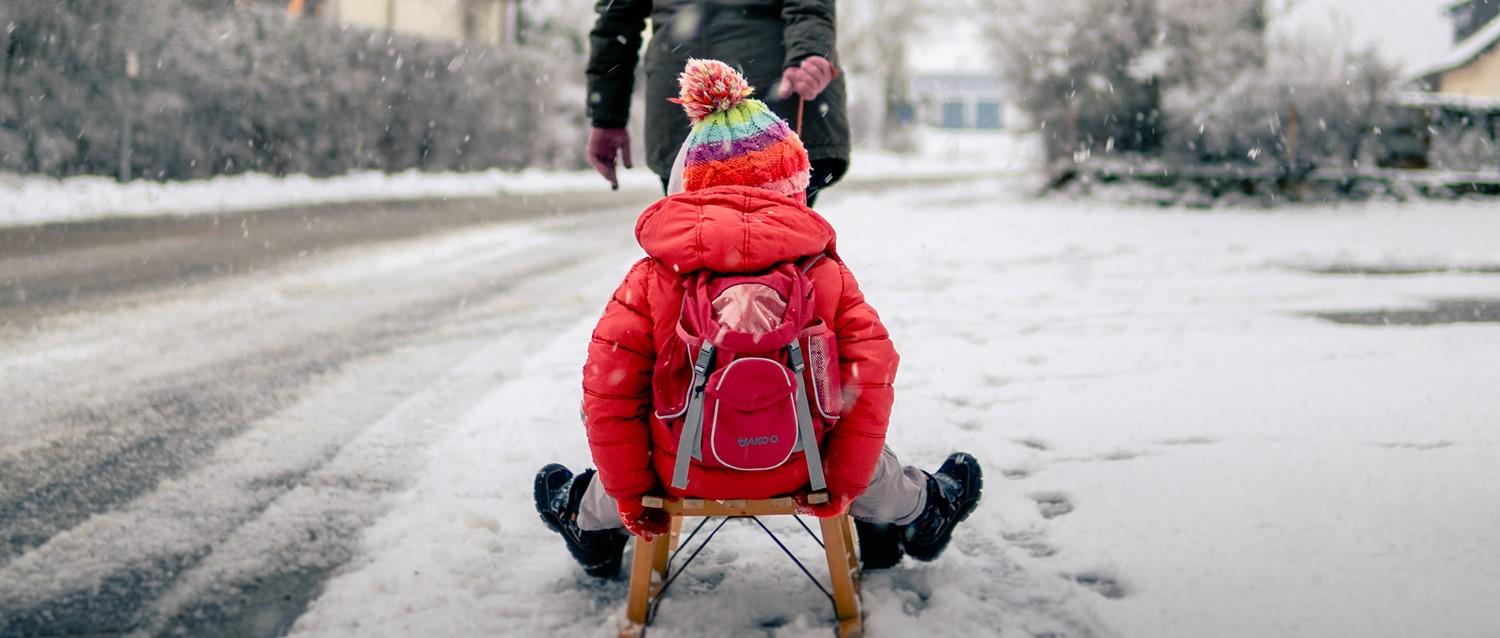
How to tell the differences between winter viruses in kids
Peer reviewed by Dr Sarah Jarvis MBE, FRCGPLast updated by Gillian HarveyLast updated 6 Jan 2021
Meets Patient’s editorial guidelines
- DownloadDownload
- Share
- Language
- Discussion
During the winter months, it's very normal for children and adults to suffer from a bout of the common cold or influenza (flu). Children in particular tend to be more susceptible to infection and can often suffer from several viruses each year. Such viruses are easily spread through contact with others, and, while a nuisance, are usually nothing to worry about.
In this article:
Continue reading below
What are the common symptoms?
There are many different strains of both influenza and the common cold, but all appear to flourish during the winter months. The instances of cold and flu in the UK usually peak between October and February each year. There are usually several strains circulating at once, but the symptoms caused are often similar.
Common cold: cold symptoms are caused by a virus, and will usually develop quite gradually. Symptoms include a blocked or running nose, sneezing, coughing, loss of appetite, and irritability.
Influenza: the onset of symptoms of influenza (flu) may be similar to that of a cold, however, flu is usually accompanied by a sudden fever. Other flu symptoms include aches and pains, diarrhoea, vomiting and loss of appetite, as well as a dry cough, weakness and chills.
How can I tell what my child is suffering from?
When our children are ill, it's natural to want to know what they are suffering from. However, with many colds and flu viruses circulating during the winter months, it is often impossible to distinguish between different strains.
One reason why it's not generally important (outside of the context of COVID-19) to identify precisely which virus your child has is because there is unlikely to be a specific treatment for that condition, even in hospital. "There is very little treatment for viruses," agrees Professor Caroline Fertleman, Consultant Paediatrician. "It's very much about managing the symptoms in that child and making sure they are hydrated."
However, some symptoms may cause parents to worry. We look at these and when to seek medical advice.
Continue reading below
My child has a cough
COVID-19
Normally, doctors will not test for individual winter viruses. At present, due to the COVID-19 pandemic it's important to isolate your child (and yourself until the result of the test is known) and arrange a test if your child develops a new continuous cough, fever or loss of smell/taste, in order to rule out coronavirus. However, this measure is to help stop the spread of the virus rather than to do with its severity. Children are at extremely low risk of developing more severe symptoms of the virus.
Croup
Croup is a type of cough, very common in childhood, that may present similar symptoms to COVID-19 . If your child develops a persistent cough, but tests negative for COVID-19, it may be that they are suffering this illness. Croup has many symptoms in common with COVID-19 but is common and generally harmless. You may notice a harsh or barking cough, noisy breathing and sore throat, which can be accompanied by fever, aches and pains.
While croup usually clears up of its own accord, it can sometimes become severe. If your child experiences difficulty breathing, is pale, becomes restless and agitated, or develops any of the symptoms described in the sections below, it's important to seek medical advice.
My child is having breathing difficulties
A child who is stuffed up because of a cold may well struggle to breathe through their nose. It's important to make sure that you encourage them to blow their nose regularly - or for younger children, use a nasal aspirator to keep this airway as clear as possible.
However, if your child is struggling to breathe it's also important to look out for the following signs, which indicate you need to seek medical advice. These include flaring of the nostrils, increased breathing rate (over 40 breaths a minute for a child aged 6-12 months, and 50 a minute for a child over 12 months old), or crackles in the chest - this can be checked for by pressing your ear to your child's chest. If your child experiences these symptoms, contact your doctor, or NHS 111.
Serious symptoms include grunting noises, the skin of the chest drawing in when your child breathes and increased breathing rate known as tachypnoea. If your child develops any of these symptoms, it's important to seek urgent medical advice or call 999.
Continue reading below
My child has a rash
Viral rashes in children are very common and usually nothing to worry about. However, in rare cases they can be a symptom of meningococcal infection. One way to check whether a rash may be a serious sign of illness is to press a glass against your child's skin. If the rash does not disappear when the glass is pressed you must seek urgent medical attention by calling 999.
Most rashes however are harmless and will disappear within a few days. Speak with your doctor or ring NHS 111 if you are concerned.
What if symptoms worsen?
While rare, it is possible for winter viruses to become more serious and for a child to need additional medical support. There are certain symptoms to be particularly mindful of, and you should also trust your judgement as a parent. "I think parents are really good at working out when babies or children are not well," says Fertleman. "They pick up on when they're not behaving as normal, and notice if their breathing is altered."
Other symptoms to look out for include:
Lips or tongue appearing blue.
Severe headache.
Earache.
Swollen glands.
Increased breathing rate.
Inability to swallow/excessive drooling.
Increased effort to breathe.
A grunting or barking sound when breathing/coughing.
Drowsiness.
Persistent high temperature (or a fever over 38°C in a baby under 3 months old and 39°C in an older child, especially one aged 3-6 months).
A rash that does not disappear when a glass is pressed against it.
A cough that lasts longer than a week (during the COVID-19 pandemic you should arrange testing as soon as you or your child develop a new continuous cough).
You should also seek medical advice if your child's symptoms last more than ten days or they develop an unusual symptom or a symptom you cannot explain.
Hospital treatment
While for the most part children are able to fight off viruses with minimal support, some children who are more susceptible may need to be treated in a hospital environment. "Some children, particularly babies who were born prematurely, are at more serious risk of viruses such as respiratory syncytial virus which can causes bronchiolitis," explains Fertleman.
"These children may need treatment in the hospital environment, where we might administer fluids or oxygen, or use medication to help with any wheeziness. Both in hospital and at home, it's all about supporting them through the virus while their immune system clears it."
How can I minimise the risk of illness?
Winter viruses are easily passed around via direct contact or in the droplets we produce when we cough or sneeze.
Washing hands regularly and keeping surfaces and toys clean can help to reduce the risk of contracting a winter virus. It's also advisable to use disposable tissues, which should be thrown away once used, and to encourage your child to wash their hands after sneezing or using a tissue. Sensible precautions, such as staying away from people suffering from cold or flu symptoms, are also advisable.
Patient picks for Viral infections

Infections
Why are some viruses seasonal?
Cold and flu viruses are associated with autumn and winter. But the explanation for why respiratory viruses peak in the colder months is far from clear.
by Natalie Healey

Infections
Do any natural cold remedies work?
This winter many of us find ourselves fighting off well-known cold symptoms, including a sore throat, a runny nose, coughing and blocked sinuses. We explore the natural cold remedies you can use at home - and ask how well they work.
by Amberley Davis
Continue reading below
Article history
The information on this page is peer reviewed by qualified clinicians.
6 Jan 2021 | Latest version

Ask, share, connect.
Browse discussions, ask questions, and share experiences across hundreds of health topics.

Feeling unwell?
Assess your symptoms online for free
Sign up to the Patient newsletter
Your weekly dose of clear, trustworthy health advice - written to help you feel informed, confident and in control.
By subscribing you accept our Privacy Policy. You can unsubscribe at any time. We never sell your data.